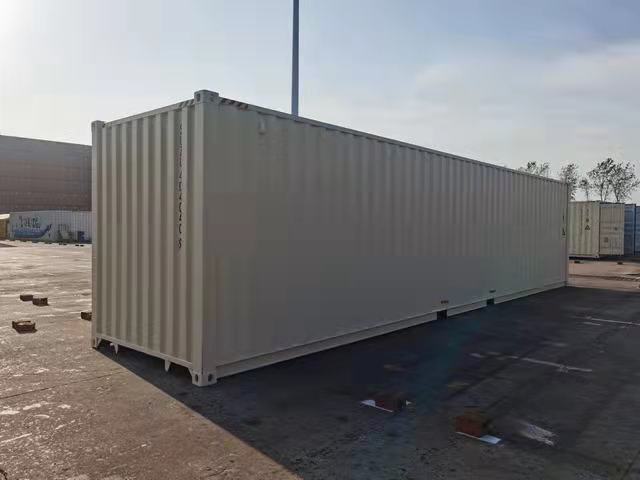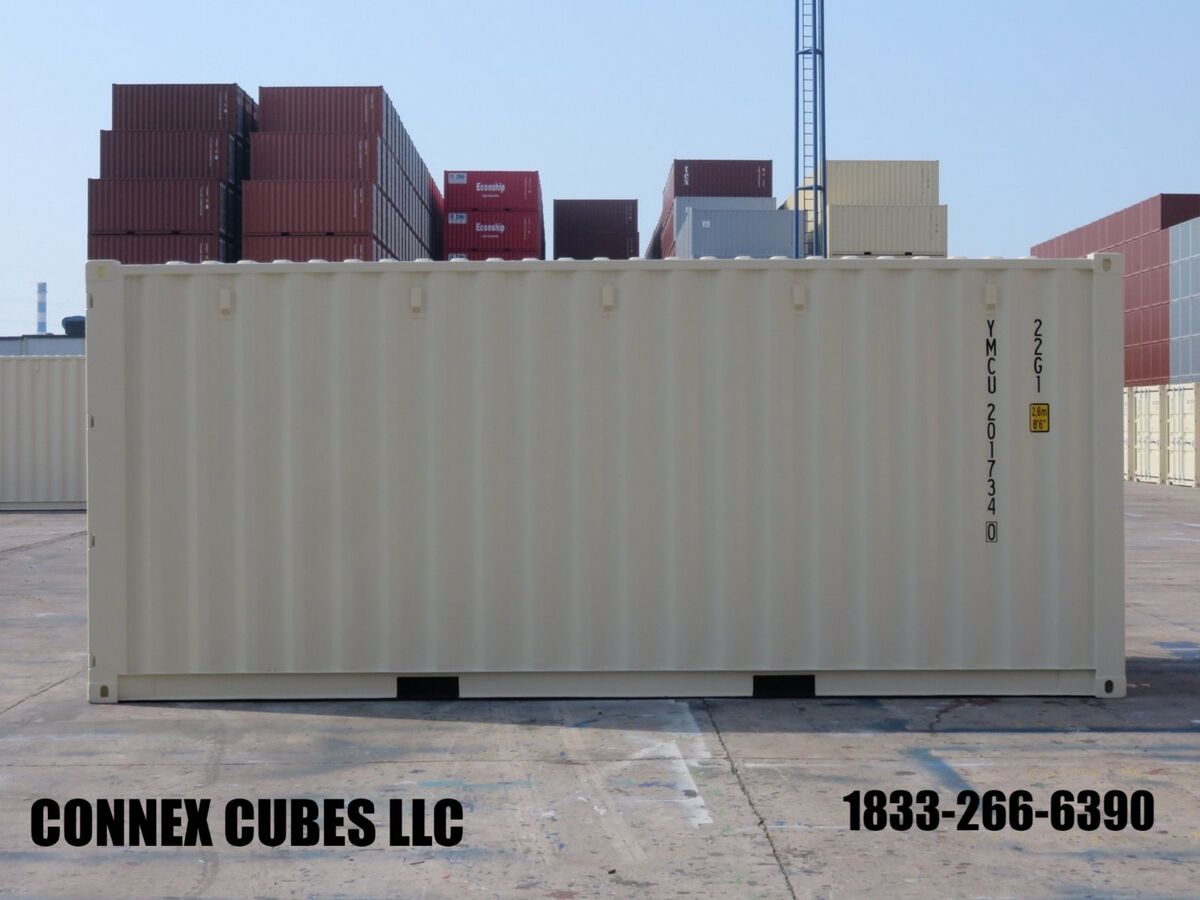Why You Should Buy New Shipping Container 40 x 8 x 9.6 for Custom Modular Designs
Why You Should Buy New Shipping Container 40 x 8 x 9.6 for Custom Modular Designs
Blog Article
The Ultimate Guide to Picking the Right Delivery Container for Your Demands
When it involves selecting the appropriate shipping container, comprehending your specific requirements is crucial. You'll wish to think about aspects like size, type, and material to guarantee you make the most effective choice. From typical sizes to specialized choices, there's a lot to explore. Plus, budgeting for both the container and any kind of adjustments can make a large distinction. Let's break down the essential aspects to assist you locate the perfect fit for your requirements.
Comprehending Delivery Container Sizes
When you're selecting a delivery container, recognizing the various sizes offered is crucial for making the best decision. Shipping containers generally are available in typical lengths of 20 and 40 feet, but you'll also discover other measurements. Understanding the dimension you need relies on what you plan to store or transport.If you're moving smaller items, a 20-foot container may be ideal, while larger shipments frequently need a 40-foot container. Keep in mind that the height can likewise differ; high dice containers use extra upright room, which can be valuable for taller goods - Lease New Shipping Container 40' x 8' x 9’6".Before making a decision, measure your cargo, and think about exactly how much room you'll require for packing and unloading. Always variable in prospective future demands-- going with a slightly bigger container may conserve you hassle down the line. Inevitably, picking the ideal size will enhance efficiency and guarantee your products are safe throughout transportation
Kinds Of Shipping Containers Available
There are numerous sorts of delivery containers available, each created for specific objectives and freight demands. The basic completely dry container is flexible, best for general freight. If you're shipping disposable products, think about a cooled container, which keeps a regulated temperature. For oversized items, high cube containers use added elevation, suiting taller loads.If you need to move heavy equipment or tools, flat rack containers provide a tough base without walls. Open-top containers enable for easy loading of high freight, with a removable tarpaulin covering for defense. If you're searching for flexibility, take into consideration a collapsible container that can be conveniently kept when not in use.Lastly, specialized containers like container containers are used for liquids, while vented containers are made for bulk cargo that needs ventilation. Knowing your cargo type will assist you select the appropriate container to fulfill your shipping requires efficiently.
Product Considerations for Resilience
When choosing a delivery container, the material plays a vital duty in its longevity. You'll want to evaluate the benefits of steel versus aluminum, especially pertaining to deterioration resistance. Recognizing these factors can help you make a more informed selection for your shipping needs.
Steel vs. Light weight aluminum Containers
Just how do you select between steel and light weight aluminum containers for your delivery needs? Start by taking into consideration longevity. Steel containers are durable and offer exceptional toughness, making them ideal for heavy lots and extreme conditions. They withstand damage from effects and are often much less expensive, which can be a major aspect for budget-conscious buyers.On the various other hand, light weight aluminum containers are light-weight, which can save you on delivery prices. They're easier to steer and are a fantastic option if you require to carry items often. Nevertheless, aluminum is normally a lot more expensive and much less durable than steel. Evaluate your certain demands thoroughly, including weight, price, and the type of freight you'll be delivery, to make the ideal option for your situation.
Deterioration Resistance Factors
Selecting the right material doesn't simply involve weight and price; rust resistance plays a considerable role in resilience. When choosing a delivery container, consider the atmosphere it'll deal with. Steel containers, while strong, can rust if not appropriately treated. Search for options with protective layers or galvanization to improve their lifespan. Aluminum, on the various other hand, supplies natural deterioration resistance, making it optimal for seaside locations or moist problems. It can be more costly. In addition, analyze the container's usage-- if it'll be subjected to chemicals or extreme climate, focus on products that can withstand these conditions. Purchasing a corrosion-resistant container currently can save you from expensive repair services or substitutes down the line. Select carefully for long-lasting benefits.
Adjustments and Personalization Options
Shipping containers aren't just for transferring goods; they can be changed to meet your particular requirements through different adjustments and modification options. You can transform a typical container into a cozy workplace, a short-term retail shop, or also an individual fitness center. The possibilities are nearly endless.Think regarding including home windows, insulation, or air flow to enhance comfort. You could also think about electric wiring, pipes, or perhaps custom-made shelving to enhance capability. If security's a worry, strengthened locks can provide peace of mind.For aesthetic allure, you can paint the container or include a special layout to make it attract attention. Don't ignore floor covering options-- whether you want resilient plywood or something a lot more sophisticated, it can elevate the space.Ultimately, customizing your delivery container to suit your needs can improve usability and create a distinct setting that reflects your style.
Examining Your Transport Requirements
When it comes to using your customized delivery container, recognizing your transport needs is essential. Begin by identifying what you'll be shipping-- whether it's heavy tools, retail items, or personal things. Each kind of freight has various needs relating to dimension, weight, and accessibility.Next, consider the range and setting of transport. Are you shipping in your area, across the country, or globally? This influences the container's layout and functionality. If you're utilizing trucks, guarantee your container fits typical dimensions for very easy loading and unloading.Additionally, think regarding transit problems. Will your things need unique defense from weather condition or temperature level fluctuations? If so, you might require insulation or ventilation attributes in your container.Lastly, analyze just how typically you'll be moving products. Constant deliveries may call for an extra sturdy and flexible container to meet recurring needs. By attending to these variables, you'll be well-prepared to select the best delivery container for your demands.
Budgeting for Your Delivery Container
Setting a spending plan for your delivery container is necessary for guaranteeing a smooth purchasing procedure. Figure out how much you can afford to spend. Costs can vary significantly based on size, condition, and kind. New containers generally set you back a lot more, but utilized ones can offer significant savings.Next, take into consideration any kind of extra prices you might incur, such as transportation fees, shipment costs, and alterations. If you intend to personalize the container, consider those expenses also. Study various suppliers to compare costs and locate the best deal that satisfies your needs.Don' t neglect to consist of any kind of permits or policies that may put on your acquisition and use the container. By plainly detailing your budget, you'll be much better prepared to make educated choices, ensuring you get the best container without breaking the financial institution.
Maintenance and Take Care Of Durability
To guarantee your shipping container lasts for many years, normal maintenance is key. Start by checking the official site outside for corrosion, damages, and damages. If you spot any type of concerns, resolve them quickly to stop additional deterioration. Tidy the container regularly, both in and out, to eliminate dirt, particles, and dampness that can result in corrosion.Ensure the doors seal properly and lubricate the hinges to prevent corrosion and sticking. If you're utilizing the container for storage, think about including air flow to decrease humidity and mold and mildew growth. For added protection, apply a rust-inhibiting paint or sealer annually.If your container's situated in a rough atmosphere, like seaside locations, you may require to boost upkeep regularity. Maintain an eye on the flooring, as well; any indications of wear ought to be fixed immediately. With these straightforward steps, you'll extend the life of your delivery container significantly.
Regularly Asked Inquiries
How Do I Discover a Reliable Shipping Container Supplier?
To locate a trustworthy shipping container provider, start by researching on-line reviews, asking for recommendations from pals or industry get in touches with, and contrasting rates. Constantly check their qualifications and assurance they use top quality containers that fulfill your requirements.

Can I Lease a Shipping Container As Opposed To Acquiring?
Yes, you can definitely rent out a shipping container as opposed to purchasing one. Several providers offer rental alternatives, which can read here save you money and give versatility if you only require it for a short duration.
What Permits Are Needed for Container Placement?

Are Shipping Containers Weatherproof and Appropriate for Outdoor Storage Space?
Yes, shipping containers are normally weatherproof, created to hold up against severe conditions. Their durable construction maintains your things safe and secure and dry, making them suitable for exterior storage space. Simply ensure correct ventilation to avoid dampness accumulation inside.
Just how Do I Move a Delivery Container As Soon As Acquired?

Report this page